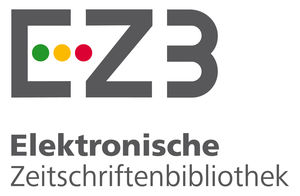CHIC en el análisis de las actitudes hacia las matemáticas en estudiantes de secundaria<b>CHIC: analyzing middle school student's attitudes towards mathematics
Keywords:
Mathematics, Affects, Attitudes, Beliefs, Emotions, Self-confidenceAbstract
Dans l'apprentissage des mathématiques convergent des aspects cognitifs et affectifs qui déterminent comment un étudiant confronte cette discipline. Dans cet article, nous nous concentrons sur les attitudes que des élèves du collège ont envers les mathématiques et envers la classe de mathématiques. Nous utilisons le modèle des trois composants comme cadre théorique pour comprendre quelles sont les attitudes des étudiants en mettant l'accent sur l'importance de leurs croyances et leurs émotions. L'étude a été menée auprès deux groupes d'étudiants collégiens (cinquième), qui présente des caractéristiques particulières sur le travail scolaire. A été appliqué aux étudiants une échelle d'attitudes Likert (AMMEC) et l'analyse des résultats obtenus a été effectuée en utilisant CHIC, dans le but de mettre en relation les différents aspects pouvant être susceptibles d'influencer les attitudes des étudiants. Les premiers résultats ont montré que la confiance de l’étudiant, en se confrontant aux devoirs en mathématiques, est un facteur important dans le plaisir que les étudiants ont pour les mathématiques et pour les cours de mathématiques.
In the process of learning mathematics, several emotional and cognitive factors play an important role in determining how the student deals with the subject. This research focuses on the attitudes that middle school students have towards the subject itself and the math course. The three-component model is a theoretical framework that helps understand the concept of what attitudes are and the importance of the student's beliefs and emotions in this learning process. This research study is carried out in a technical school with a unique teaching/learning approach. Two separate classes of seventh graders were given a likert-type attitude test and the results were analyzed with CHIC. The purpose of this method was to find the relationship among different factors that might be affecting the student's attitudes towards the subject. Preliminary results show that the student’s self confidence when dealing with math problems plays an important role on the interest he/she develops for the subject and the math course in school.
References
AUZMENDI, E. (1992), Las actitudes hacia la matemática-estadística en las enseñanzas medias y universitarias. Características y medición, Ediciones Mensajero, Bilbao, España.
COUTURIER, R. (2008), CHIC: Cohesive Hierarchical Implicative Classification, Statistical Implicative Analysis. Theory and Applications, 41-53, Springer-Verlag Berlin Heidelberg, Berlin.
DEBELLIS, V. A., y Goldin, G. A. (2006), Affect and Meta-affect in Mathematical Problem Solving: A Representational Perspective. Educational Studies in Mathematics, 63 (2), 131-147.
GÓMEZ-CHACÓN, I. M. (2000), Matemática Emocional. Los afectos en el aprendizaje matemático, Narcea, Madrid.
GRAS, R., y Kuntz, P. (2008), An overview of tha Statistical Implicative Analysis (SIA) development, Statistical Implicative Analysis. Theory and Applications, 11-40, Springer-Verlag Berlin Heidelberg, Berlín.
MAIO, G., Bernard, M., Luke, M., y Olson, J. (2003), Ideologies, Values, Attitudes and Behavior, Handbook of Social Psychology, 283-308, Kluwer Academic/Plenum Publishers, New York.
MARTÍNES PADRÓN, O. (2008), Actitudes hacia la matemática, Sapiens , 9 (1), 237-256.
MCLEOD, D. (1989), Beliefs, Attitudes, and Emotions: New Views of affect in Mathematics Education, Affect and Mathematical Problem Solving. A New Persepctive, 245-258, Springer-Verlag, New York.
MCLEOD, D. (1992), Research on affect in mathematics education: A reconceptualization, Handbook of research on mathematics learning and teaching, 575-596, McMillan, New York.
MCLEOD, D. (1994), Research on affect and mathematics learning in the JRME: 1970 to the present, Journal for Research in Mathematics Education , 25 (6), 637-647.
MEXICO, Secretaría de Educación Pública-SEP-. (2006), Educación Básica. Secundaria. Plan de Estudios 2006, Secretaría de Educación Pública, México.
Secretaría de Educación Pública-SEP-. (2009), Plan de Estudios 2009. Educación Básica. Primaria, Secretaría de Educación Pública, México.
MEXICO, Secretaría de Educación Pública-SEP-. (2011), Plan de Estudios 2011. Educación Básica, Secretaría de Educación Pública, México.
MEXICO, Secretaría de Educación Pública-SEP-. (2011b), Programa de Estudio 2011. Guía para el Maestro. Educación Básica. Secundaria. Matemáticas, Secretaría de Educación Pública, México.
URSINI, S. (2009), Aspectos educativos y de género. Modelos de intervención para el mejoramiento de las capacidades de aprendizaje. Cuadernos de trabajo. 15, Instituo Nacional de las Mujeres, México.
URSINI, S. (2010), Género y desempeño en matemáticas en el tercer grado de secundaria, Género y desarrollo, 54-99, Instituto nacional de las mujeres, México.
URSINI, S., Sánchez, G., & Orendain, M. (2004), Validación y confiabilidad de una escala de Actitudes hacia las Matemáticas y hacia las Matemáticas Enseñadas con Computadora, Educación Matemática, 16, 59-78.
VILA, A., y Callejo, M. L. (2004), Matemáticas para aprender a pensar. El papel de las creencias en la resolución de problemas, Narcea, Madrid.
WALLS, F. (2003), Sociomathematical worlds: Investigating children's developing relationships with mathematics. Recuperado 10 de enero de 2013 de http://eprints.jcu.edu.au/775/.
Downloads
Published
How to Cite
Issue
Section
License
Autores que publicam nesta revista concordam com os seguintes termos:- Autores mantém os direitos autorais e concedem à revista o direito de primeira publicação, com o trabalho simultaneamente licenciado sob a Licença Creative Commons Attribution que permite o compartilhamento do trabalho com reconhecimento da autoria e publicação inicial nesta revista.
- Autores têm autorização para assumir contratos adicionais separadamente, para distribuição não-exclusiva da versão do trabalho publicada nesta revista (ex.: publicar em repositório institucional ou como capítulo de livro), com reconhecimento de autoria e publicação inicial nesta revista.
- Autores têm permissão e são estimulados a publicar e distribuir seu trabalho online (ex.: em repositórios institucionais ou na sua página pessoal) a qualquer ponto antes ou durante o processo editorial, já que isso pode gerar alterações produtivas, bem como aumentar o impacto e a citação do trabalho publicado (Veja O Efeito do Acesso Livre).













